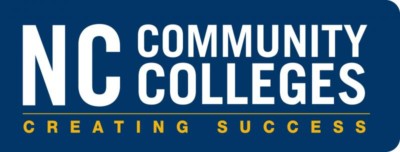

Crossroads FLEX is a public high school in Wake County that offers flexible schedules and online classes for students with demanding pursuits outside of school, such as athletic, artistic or professional interests. They use a digital blended learning model, which combines online learning with traditional place-based learning in classrooms.
The student body consists of soccer players, baseball athletes, swimmers, performers, and students with various other interests. One student, Claudia Stakoe, works with local nonprofits. The flexibility during the day paired with online classes allows her to pursue those passions and still keep up with her classes.
“We first think of Crossroads Flex as an innovation in having flexibility in the hours of schooling, but it is more than that. It is a different model that relies on the student to pursue a significant amount of the coursework outside of bricks and mortar class time,” said Ann McColl, co-founder and president of The Innovation Project. “This places a greater level of responsibility on the student to structure time for completing classwork. It also requires a supportive family structure that can accommodate the needs of the student. As we reimagine learning, we will have to think deeply about how to support students equitably in a flexible learning environment.”
What does a typical day at Crossroads Flex look like?
When I asked Stakoe, a senior, what a typical day was like for her, she paused. She didn’t know what to say.
I asked Kasey Turcol, Crossroads FLEX social sciences teacher the same question. She laughed and said, “there’s no such thing as a typical day at Crossroads FLEX.”
Stakoe starts each Monday at 10 a.m. for yearbook meetings. Then at 11:30 a.m., she leads student council meetings. She stays until 2:00 p.m., completing work for her online classes.
“Within the Crossroads FLEX setting, students can come in on their own time, and they can get support from teachers that we have here in our building,” said Debbie Ray, Crossroads FLEX principal.
Stakeo uses her flexibility to serve on the Youth Advocacy Council with NC Child, a nonprofit focused on policy changes that benefit children.
“We have events during the day, and luckily, Crossroads Flex has that flexible attendance that makes me able to attend events or conferences,” she said. “So I can still do what I’m passionate about, but I don’t have to worry about having absences on my report card.”


Stakoe began her high school experience at a larger, traditional school in Wake County.
“I went to a high school that had 3,000 students,” she said. “My grades were slipping in class sizes of 30 people, teachers who didn’t really know my name.”
“And so, once I transferred, my grades went up a ton,” Stakoe said, “and I started participating more. I’m senior class president. I’m yearbook editor. And I like never would have done that stuff at my previous high school.”
What is blended learning?
Turcol is one of four teachers that serve 100 students at Crossroads FLEX. Her classes might have anywhere from six to 24 students each semester. They meet twice each week for 90 minutes each period and the other three days each week are fully online.
“My class is actually similar to a face-to-face class,” Turcol said. “What happens is that’s kind of more of a flipped model for me.”
While students in a traditional classroom receive lectures from a teacher and then go home to complete assignments, a “flipped” classroom features students who complete content exploration on their own online and then work on assignments or collaborations in class with guidance from a teacher.
“I think [blended learning] is something that could be implemented into traditional schools,” Turcol said. “A simple rotation model could allow a class of 30 now to be grouped into smaller sections. And a teacher now could work with a group of 5.”
Turcol prides herself on building relationships with her students. “We have roaming duty here. And that ensures that every student gets contacted by a teacher every day,” said Turcol. “It has really allowed me to foster these incredible relationships.”
“[The students] spend four years with these four teachers and we really get to know them and see them grow and push them independently and individually,” Turcol said.
Little disruption from COVID-19 closures
Behind the Story
Taylor Shain, EdNC’s video producer, visited Crossroads FLEX in late February. When schools shut down due to the COVID-19 outbreak the week of March 16, he reached back out to see how the school’s learning is being affected.
“Crossroads FLEX will not be greatly affected by the closing because our courses are either virtual or blended,” said Ray in emailed comments to EdNC. “Online instruction is already embedded in our face-to-face classes.”
Since Crossroads FLEX learning model is already online, Turcol said their learning hasn’t been interrupted.
“We are blessed to have virtual infrastructure in place as a foundation for continuing students’ learning during this time,” said Turcol. “My students have experience with fully virtual courses and understand what it will take to be successful including the expectations for communication in an online environment.”








